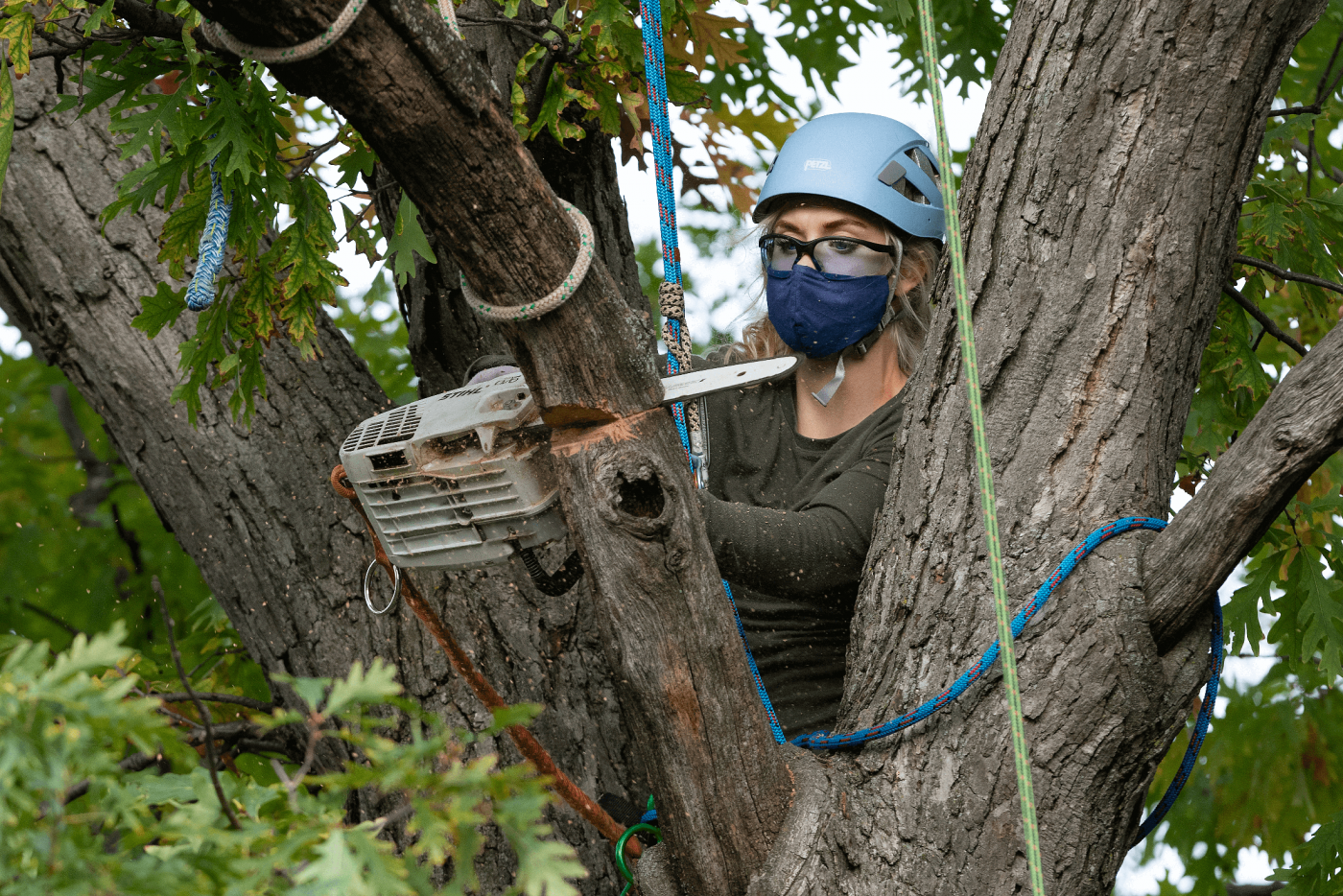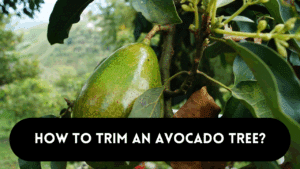Palm trees are known for their exotic beauty and the tropical ambiance they bring to any landscape. However, there are times when you might find yourself needing to remove a palm tree and its stubborn roots. Whether you’re making way for a new landscaping project, dealing with a diseased palm tree, or just need to reclaim some space in your garden, knowing how to remove palm tree roots is essential.
In this comprehensive guide, we’ll walk you through the steps and considerations involved in the palm tree root removal process. We’ll cover everything from assessing the situation to safety precautions, various removal methods, and post-removal care. By the end of this blog post, you’ll have the knowledge and confidence to tackle this task with efficiency and care.
Before we delve into the nitty-gritty of palm tree root removal, let’s briefly discuss why you might find yourself in this situation. You may want to redesign your garden, build a patio, or install a new structure in your yard, and the existing palm tree roots are in the way. Sometimes, palm trees suffer from diseases or physical damage that make them unsalvageable. In such cases, removing both the tree and its roots may be necessary.
Overgrown palm tree roots can pose tripping hazards, especially if they surface in high-traffic areas of your property. Palm tree roots can damage underground utilities, foundations, and hardscapes if left unchecked. If your palm tree has outgrown its designated space, root removal might be required to prevent future issues.
Now that you understand why removing palm tree roots might be necessary, let’s move on to the steps involved in the process and the precautions you should take to ensure a successful removal while safeguarding your property and the environment.
Assessing the Situation
Determine the Size and Health of the Palm Tree
Size Matters: Assess the size of the palm tree you’re dealing with. Smaller palm trees are generally easier to remove, while larger ones may require more effort and resources.
Health Check: Examine the overall health of the palm tree. If the tree is already deceased, unstable, or dead, it may be more susceptible to removal.
Tree Species: Different species of palm trees have varying root systems. Some have shallow roots, while others delve deeper into the ground. Identifying the specific species will inform your removal strategy.
Identify the Depth and Spread of the Palm Tree Roots
Root Depth: Determine how deep the palm tree roots go. This information is crucial as it will dictate the tools and methods you’ll need for removal.
Root Spread: Assess the lateral spread of the roots. Are they encroaching on other plants, structures, or utilities? Understanding the root spread will help you plan where and how to cut or dig.
Underground Obstacles: Be aware of any underground obstacles, such as pipes, cables, or irrigation systems, that may be near the palm tree roots. Avoid damaging these during the removal process.
Check for Any Legal or Environmental Regulations
Local Regulations: Research your local regulations regarding tree removal. Some areas may require permits for palm tree removal, especially if they are considered protected species.
Environmental Impact: Consider the environmental impact of removing the palm tree and its roots. Are there any local conservation efforts or guidelines to follow?
Dispose Responsibly: Plan ahead for the responsible disposal of removed palm tree parts, including branches and roots. Composting or recycling may be viable options.
Tools and Safety Precautions
Tools and Equipment for Palm Tree Root Removal
- Shovel
- Root Saw
- Mattock or Pickaxe
- Loppers
- Safety Gear
- Safety Barrier Tape
- Chainsaw
- Stump Grinder
Safety Precautions for Palm Tree Root Removal
Wear Protective Gear: Always wear appropriate safety gear, including eye protection, gloves, a hard hat, and sturdy work boots. This gear will protect you from falling debris and potential injuries.
Check for Utility Lines: Before digging, call your local utility companies to locate and mark underground utilities. This step prevents accidents involving gas, water, or electrical lines.
Work with a Partner: It’s advisable to have someone else present during the removal process for assistance and in case of emergencies.
Plan Escape Routes: When using heavy equipment like chainsaws or stump grinders, plan escape routes in case of sudden movement or accidents.
Follow Manufacturer Instructions: If using power tools, carefully read and follow the manufacturer’s instructions for safe operation.
Stay Hydrated: Palm tree root removal can be physically demanding work, so ensure you stay hydrated throughout the process.
Take Breaks: Avoid overexertion by taking regular breaks to rest and evaluate progress.
Dispose of Debris Safely: Properly dispose of removed palm tree parts, including branches and roots, in accordance with local regulations and environmental guidelines.
Methods to Remove Palm Tree Roots?
Manual Root Removal
Expose the Roots: Start by digging around the base of the palm tree to expose the roots. Use a shovel to carefully remove soil and uncover the roots.
Cut the Roots: Once exposed, use a root saw, pruning saw, or loppers to cut through the roots. Begin with the smaller, peripheral roots and work your way toward the thicker ones.
Dig and Pry: For stubborn or deeply rooted sections, use a mattock or pickaxe to break up the soil and pry the roots loose.
Gradual Removal: Continue this process, gradually working your way around the tree until you’ve severed most of the roots.
Remove the Stump: Once the roots are cut, you can proceed to remove the palm tree stump using the same tools or by digging it out.
Tips for Manual Root Removal:
Be patient and methodical. Removing roots manually can be time-consuming.
Avoid excessive force, as it can damage surrounding plants or structures.
Dispose of the removed roots responsibly, adhering to local waste disposal regulations.
Mechanical Root Removal
Prepare the Area: Clear the area around the palm tree, ensuring there are no obstacles or debris that could interfere with the grinder’s operation.
Operate the Stump Grinder: Start the stump grinder and carefully position it over the palm tree stump. Slowly lower the grinding wheel onto the stump, grinding it down incrementally.
Move the Grinder: Gradually move the grinder from side to side to grind the entire stump and the surrounding roots.
Dispose of Debris: Collect the ground-up root and stump material and dispose of it properly. Some stump grinders have a collection bag for this purpose.
Tips for Mechanical Root Removal:
Stump grinders can be rented from equipment rental stores, but they require some skill to operate safely. Consider hiring a professional if you’re not experienced with this equipment.
Always follow the manufacturer’s instructions when operating a stump grinder.
Ensure the work area is clear of people and pets during operation.
Chemical Root Removal
Drill Holes: Drill several holes into the palm tree stump and any exposed roots. Make the holes deep enough to reach the root system.
Apply Chemical Solution: Fill the holes with a chemical root killer or a high-concentration herbicide. Follow the manufacturer’s instructions for the specific product you’re using.
Wait for Decomposition: Allow the chemical solution to penetrate and decompose the roots over several weeks or months. Monitor the progress periodically.
Remove Decomposed Roots: Once the roots have decomposed sufficiently, you can manually remove the softened and weakened root material.
Tips for Chemical Root Removal:
This method requires patience, as it may take several months for the roots to fully decompose.
Exercise caution when handling chemicals, and store them safely away from children and pets.
Follow all safety and environmental guidelines provided with the chemical product.
The choice of method for removing palm tree roots largely depends on the size of the tree, the extent of the root system, and your comfort level with the equipment and techniques involved.
Aftercare and Replanting
Aftercare for the Removal Area
Fill the Hole: If you’ve removed a significant palm tree stump, fill the resulting hole with soil to level the ground. Tamp down the soil to ensure it’s compacted and stable.
Check for Regrowth: Keep an eye on the removal area for any signs of palm tree regrowth. If new shoots or roots appear, promptly remove them to prevent reestablishment.
Mulch the Area: Applying a layer of mulch over the removal area helps retain moisture, improve soil quality, and suppress weed growth.
Monitor Soil Stability: Over time, the soil in the removal area may settle. Add more soil as needed to maintain a level surface.
Water Properly: Ensure the soil remains adequately moist, especially during the early stages of recovery. Proper watering encourages surrounding plants to thrive and helps fill in the empty space left by the palm tree.
Replanting or Landscaping
Choose New Plants: If you’d like to replace the removed palm tree with new plants, choose species that are suitable for your climate and landscaping goals. Consider factors like sun exposure and soil type.
Plant Properly: Follow best practices for planting new vegetation. Dig holes that are appropriately sized for the new plants and provide adequate spacing.
Fertilize and Mulch: Apply fertilizer and mulch around the newly planted vegetation to promote healthy growth.
Maintain the Area: Regularly care for the replanted or landscaped area by watering, weeding, and pruning as needed.
Consider Hardscaping: If you’re not interested in replanting, you might opt for hardscaping features like a patio, walkway, or garden decorations to enhance the area.
Preventative Measures
Choose Wisely: When planting new trees or palms, select species with less invasive root systems.
Root Barriers: Install root barriers to redirect root growth away from sensitive areas like foundations or utility lines.
Regular Pruning: Schedule regular pruning for established trees to maintain healthy root systems and prevent overgrowth.
Troubleshooting
Stubborn or Resilient Roots
Issue: Some palm tree roots may prove exceptionally challenging to cut or dig out, especially if they are thick, woody, or deeply embedded in the soil.
Use the Right Tools: Ensure you have the appropriate tools, such as a powerful root saw, mattock, or pickaxe, to handle tough roots.
Soak the Soil: Water the area thoroughly before attempting to remove the roots. Moist soil is easier to work with and can soften the roots.
Patience is Key: Take your time and work methodically. Stubborn roots may require multiple attempts to cut or remove.
Underground Obstacles
Issue: Discovering unexpected underground obstacles, such as utility lines or large rocks, can complicate the removal process and pose safety risks.
Call Utility Companies: Before starting any digging or excavation work, call your local utility companies to mark the location of underground utilities.
Adjust Your Approach: If you encounter obstacles, carefully adjust your removal strategy to work around them, ensuring you don’t damage them in the process.
Re-Growth
Issue: After removing the palm tree and its roots, you might notice new shoots or roots emerging from the stump or remaining root system.
Apply Herbicide: Treat any re-growth with a suitable herbicide or root killer, following the manufacturer’s instructions.
Regular Monitoring: Keep a close eye on the area for signs of regrowth, and promptly address any emerging shoots or roots.
Environmental and Regulatory Issues
Issue: You may face environmental concerns or regulatory challenges when removing palm tree roots, such as protected species or local ordinances.
Research Local Regulations: Thoroughly research and comply with local regulations related to tree removal. Obtain any necessary permits or approvals.
Consult Experts: If you’re dealing with protected palm tree species or complex environmental regulations, consider consulting with a local arborist or environmental expert.
Incomplete Removal
Issue: Despite your best efforts, you might find that you were unable to remove all of the palm tree roots.
Monitor the Area: Keep an eye on the area for any signs of decay or decomposition in the remaining roots. Gradually, they may weaken and become easier to remove.
Seek Professional Help: If you’re unable to fully remove the roots or if they pose a risk to your property, consider hiring a professional tree removal service to complete the task.
Safety and Environmental Considerations
Throughout the entire process of palm tree root removal, safety and environmental responsibility should be your top priorities. By taking the necessary precautions and respecting the environment, you can ensure a successful removal while minimizing risks and ecological impact.
Safety First
Protective Gear: Always wear the appropriate safety gear, including safety goggles, gloves, a hard hat, and steel-toed boots, to shield yourself from potential injuries.
Check for Utilities: Call utility companies to locate and mark underground utilities before digging to prevent accidents involving gas, water, or electrical lines.
Work with a Partner: Whenever possible, have someone else present during the removal process to assist and provide help in case of emergencies.
Plan Escape Routes: If you’re using heavy equipment like chainsaws or stump grinders, establish clear escape routes in case of unexpected movement or accidents.
Follow Instructions: If using power tools, meticulously follow the manufacturer’s instructions to ensure safe operation.
Stay Hydrated: The physical nature of palm tree root removal can be demanding, so make sure you stay hydrated throughout the process.
Take Breaks: Prevent overexertion by taking regular breaks to rest and assess your progress.
Dispose of Debris Safely: Responsibly dispose of removed palm tree parts, including branches and roots, following local waste disposal regulations and environmental guidelines.
Environmental Responsibility
Local Regulations: Familiarize yourself with local regulations regarding tree removal, especially if palm trees are protected species in your area. Obtain any necessary permits or approvals.
Chemical Use: If using chemical root removal methods, handle chemicals with care, and follow the manufacturer’s guidelines for safe and responsible application.
Waste Disposal: Properly dispose of any chemical containers and unused chemicals, ensuring they don’t pose a threat to the environment.
Wildlife Awareness: Be mindful of local wildlife. Avoid disturbing nests or habitats during the removal process, and consider consulting with local environmental authorities if necessary.
Replant or Landscape: Whenever possible, replant the area or incorporate it into your landscaping plans to maintain a green and eco-friendly environment.
Root Barriers: When replanting or landscaping, consider using root barriers to prevent future root encroachment into unwanted areas.
FAQs
How deep do palm tree roots typically grow?
Palm tree roots can vary in depth, but they often grow relatively shallow, usually no more than 2-3 feet deep, making them more manageable to remove than some other tree species.
What are the signs of palm tree root damage on my property?
Signs of palm tree root damage may include heaved or cracked surfaces, uneven ground, and damaged irrigation systems. Your lawn may also show signs of stress and reduced growth.
Can I cut palm tree roots without harming the tree?
Cutting palm tree roots should be done with caution. While some root pruning is possible, excessive cutting can weaken or even kill the tree. It’s best to consult with a professional arborist for guidance.
What is the most effective way to remove palm tree roots completely?
Removing palm tree roots may require digging them out carefully. For larger jobs, it’s advisable to hire a professional tree removal service or an arborist with the expertise to ensure the job is done correctly.
Are there alternatives to removing palm tree roots if I want to keep the tree?
If you want to keep the palm tree but prevent root damage, consider installing a root barrier or trimming the roots strategically. An arborist can help you with root management techniques that can protect both the tree and your property.
Conclusion
Congratulations! You’ve now learned the ins and outs of removing palm tree roots. Whether you need to clear space for a new project, address safety concerns, or deal with diseased palm trees, this guide has provided you with the knowledge and steps to do so effectively and responsibly. Begin by evaluating the size and health of the palm tree, as well as the depth and spread of its roots. Check for any underground obstacles and be aware of local regulations. Gather the necessary tools and equipment for the removal process, and prioritize safety precautions to protect yourself and your property.
Choose the appropriate removal method based on the size and extent of the palm tree root system. Options include manual removal, mechanical removal with a stump grinder, and chemical root removal. Once the roots are removed, take care of the removal area by filling holes, monitoring for regrowth, and considering replanting or landscaping. Be prepared to address common challenges such as stubborn roots, underground obstacles, re-growth, and regulatory issues.
Throughout the entire process, prioritize safety by wearing protective gear, checking for utilities, and following instructions. Be environmentally responsible by adhering to local regulations, safely using chemicals, and disposing of waste properly. Finally, take pleasure in your newly cleared space or the fresh landscape you’ve created. You’ve not only removed palm tree roots but also taken steps to maintain a safe and eco-friendly environment.




